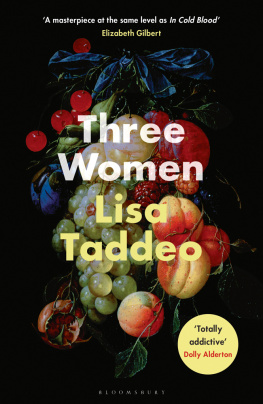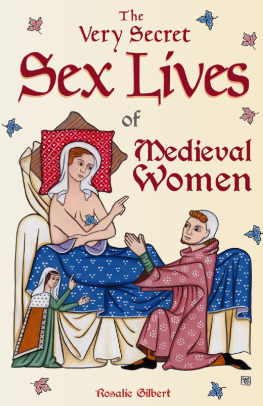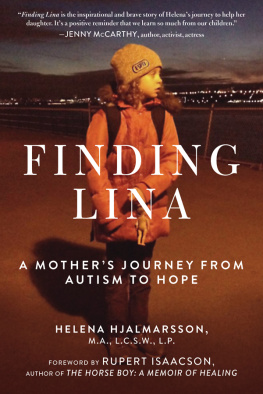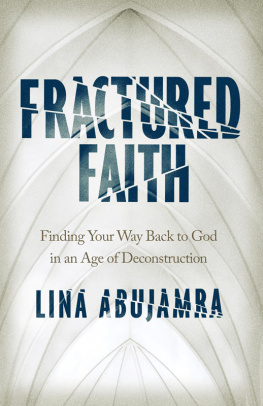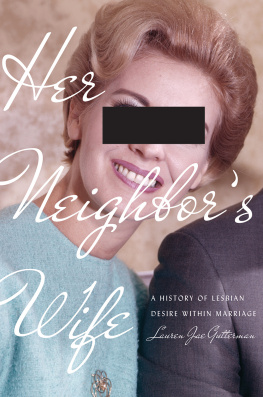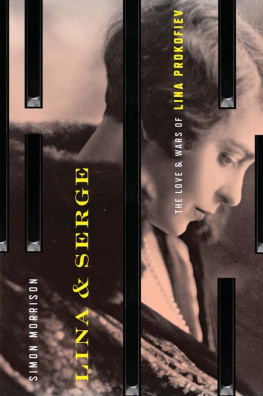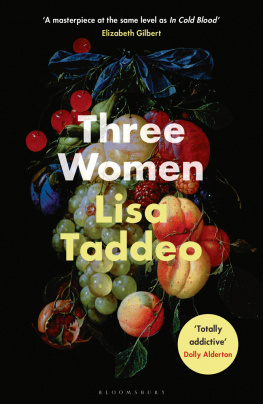Three Women

For Fox
Looking from outside into an open window one never sees as much as when one looks through a closed window. There is nothing more profound, more mysterious, more pregnant, more insidious, more dazzling than a window lighted by a single candle. What one can see out in the sunlight is always less interesting than what goes on behind a windowpane. In that black or luminous square life lives, life dreams, life suffers.
CHARLES BAUDELAIRE
Authors note
T his is a work of nonfiction. Over the course of eight years I have spent thousands of hours with the women in this bookin person, on the phone, by text message and email. In two cases, I moved to the towns where they lived and settled in as a resident so I could better understand their day-to-day lives. I was there to experience many of the moments Ive included. For the events that happened in the past or at times when I wasnt present, Ive relied on the womens memories, their diaries, and their communications. I have conducted interviews with friends and family members and followed their social media. But for the most part I stayed with the point of view of the three women.
I used court documents and local news articles and spoke to reporters, judges, attorneys, investigators, colleagues, and acquaintances to confirm events and timelines. Almost all quotes come from legal documents, emails, letters, recordings, and interviews with the women and other individuals in the book. The important exception is the one case in which the text messages, physical letters, and some emails were unavailable. In this instance, the content provided is based on multiple retellings from the subject, which have been disputed by her correspondent.
I based my selection of these three women on the relatability of their stories, their intensity, and the way that the events, if they happened in the past, still sat on the womens chests. I was restricted to speaking to women who were open to telling me their stories, on the record and without holding back. Several subjects decided, halfway through my research, that they were too fearful of being exposed. But largely, I based my selection on what I perceived as these womens ability to be honest with themselves and on their willingness to communicate their stories in ways that laid bare their desire. Others lack a distinct voice in this text because these stories belong to these women. I have, however, elected to protect those whose voices are not featured by changing almost all the names, exact locations, and identifying details in the two accounts that have not already been the subject of public record. In that third account, I have changed the names of the individuals who did not play a public role or who were minors during the period of time in question.
I am confident that these stories convey vital truths about women and desire. In the end, though, it is these three specific women who are in charge of their narratives. There are many sides to all stories, but this is theirs.
W hen my mother was a young woman a man used to follow her to work every morning and masturbate, in step behind her.
My mother had only a fifth-grade education and a dowry of medium-grade linen dish towels, but she was beautiful. Its still the first way I think of to describe her. Her hair was the color of the chocolates you get in the Tirolean Alps and she always wore it the same wayshort curls piled high. Her skin was not olive like her familys but something all its own, the light rose of inexpensive gold. Her eyes were sarcastic, flirtatious, brown.
She worked as the main cashier at a fruit and vegetable stand in the center of Bologna. This was on the Via San Felice, a long thoroughfare in the fashion district. There were many shoe stores, goldsmiths, perfumeries, tobacconists, and clothing stores for women who did not work. My mother would pass these boutiques on the way to her job. She would look into the windows at the fine leather of the boots and the burnished necklaces.
But before she came into this commercial zone she would have a quiet walk from her apartment, down little carless streets and alleys, past the locksmith and the goat butcher, through lonely porticoes filled with the high scent of urine and the dark scent of old water pooling in stone. It was through these streets that the man followed her.
Where had he first seen her? I imagine it was at the fruit stand. This beautiful woman surrounded by a cornucopia of fresh produceplump figs, hills of horse chestnuts, sunny peaches, bright white heads of fennel, green cauliflower, tomatoes on the vine and still dusty from the ground, pyramids of deep purple eggplant, small but glorious strawberries, glistening cherries, wine grapes, persimmonsplus a random selection of grains and breads, taralli, friselle, baguettes, some copper pots for sale, bars of cooking chocolate.
He was in his sixties, large-nosed and balding, with a white pepper growth across his sunken cheeks. He wore a newsboy cap like all the other old men who walked the streets with their canes on their daily camminata.
One day he must have followed her home because on a clear morning in May my mother walked out the heavy door of her apartment building from darkness into sudden lightin Italy nearly every apartment house has dark hallways, the lights dimmed and timed to cut costs, the sun blocked by the thick, cool stone wallsand there was this old man she had never seen, waiting for her.
He smiled and she smiled back. Then she began her walk to work, carrying an inexpensive handbag and wearing a calf-length skirt. Her legs, even in her old age, were absurdly feminine. I can imagine being inside this mans head and seeing my mothers legs and following them. One inheritance of living under the male gaze for centuries is that heterosexual women often look at other women the way a man would.
She could sense his presence behind her for many blocks, past the olive seller and the purveyor of ports and sherries. But he didnt merely follow. At a certain corner, when she turned, she caught a movement out of the side of her eye. The stone streets were naked at that hour, in the toothache of dawn, and she turned to see he had his penis, long, thin, and erect, out of his pants, and that he was rapidly exercising it, up and down, with his eyes on her in such a steady manner that it seemed possible that what was happening below his waist was managed by an entirely different brain.
She was frightened then, but years after the fact the fear of that first morning was bleached into sardonic amusement. For the months that followed, he would appear outside her apartment several mornings a week, and eventually he began to accompany her from the stand back to her home as well. At the height of their relationship, he was coming twice a day behind her.
My mother is dead now, so I cant ask her why she allowed it, day after day. I asked my older brother, instead, why she didnt do something, tell someone.
It was Italy, the 1960s. The police officers would have said, Ma lascialo perdere, e un povero vecchio. E una meraviglia che ha il cazzo duro a sua et.
Leave it alone, hes a poor old man. Its a miracle he can get it up at his age.
My mother let this man masturbate to her body, her face, on her walk to work and on her walk back. She was not the type of woman to take pleasure in this. But I cant know for sure. My mother never spoke about what she wanted. About what turned her on or off. Sometimes it seemed that she didnt have any desires of her own. That her sexuality was merely a trail in the woods, the unmarked kind that is made by boots trampling tall grass. And the boots belonged to my father.

